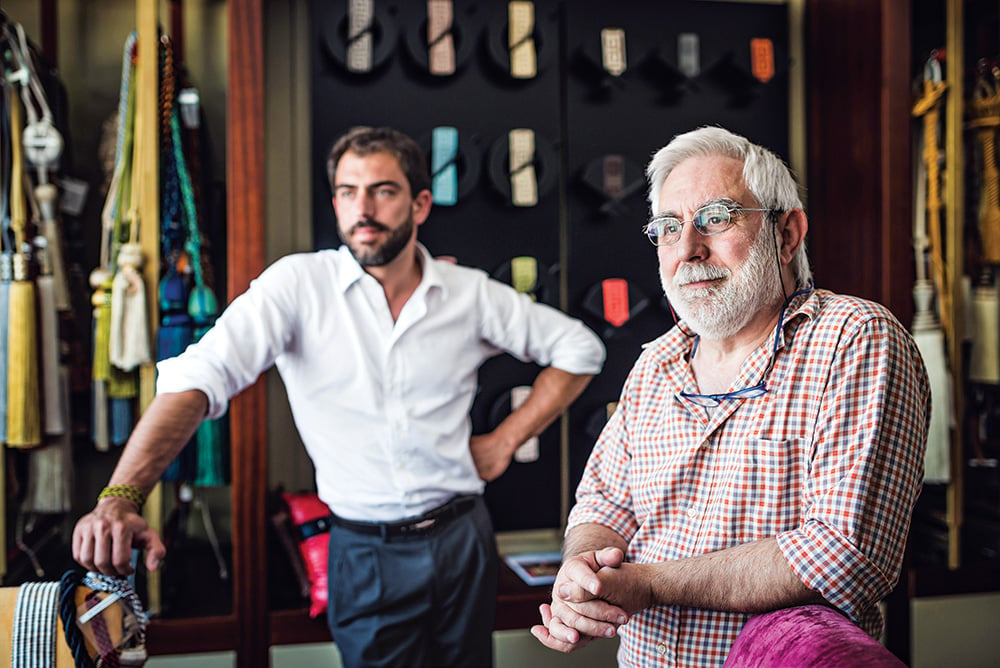Who Holds the Most Power in Rhode Island?
Our April cover story highlights the forty-five most powerful Rhode Islanders in business, politics, education, development, philanthropy and more.
INDEX:
The Unexpected Governor | Politics | Changing of the Guard | Business | People to Watch | Arts (below)| Law | Development | Sports | Philanthropy | Education | Health | Labor
Arts
Crystal Williams
Rhode Island School of Design’s eighteenth president is committed to diversity, equity and inclusion in higher education, which makes her a natural fit as the school makes greater strides in these areas. Previously, Williams served as Boston University’s inaugural vice president and associate provost for community and inclusion, and she worked in similar academic roles at both Reed College and Bates College. But long before her career path in education, she established herself as an award-winning poet and essayist, publishing four books of poetry and attaining accolades and fellowships within the arts community.
Marta V. Martínez
The executive director of Rhode Island Latino Arts, Marta V. Martínez is a public historian of Latinx arts and culture, communicating bilingually in both English and Spanish, as well as in American Sign Language. Martínez is also the project director and founder of Nuestras Raíces: Latino Oral Histories of Rhode Island, and she’s worked with young people at local libraries, schools, museums and national conferences to teach them about the importance of sharing their own multicultural stories. Martínez is currently the 2022-2023 Oral History Fellow at the Oral History Association and is also a 2023 Rhode Island Pell Award recipient for Excellence in the Arts, which will be presented in June.
Yarrow Thorne
Thanks to the vision of Yarrow Thorne, the Creative Capital is now a walkable art exhibit. In the past ten years, the founder and executive director of the Avenue Concept has championed public art, blazing a trail to transform Providence from a grayscale cityscape into a vibrant outdoor gallery of murals and sculptures created by diverse artists. While earning his Bachelor of Fine Arts from Rhode Island School of Design, he also established the school’s first public art policy. Thorne used a SEED Grant from the Robert Rauschenberg Foundation to form the Avenue Concept, which has led to the creation of 250-plus art installations in the city and beyond while fostering relationships with artists, organizations, businesses and city and state leaders.
 J. Lynn Singleton
J. Lynn Singleton
Lynn Singleton has seen a lot during his forty years heading the Providence Performing Arts Center. He’s seen downtown transform from an underinvested shell with few residents — “Westminster Street was like a wasteland,” he recalls — to a bustling center of commerce and residential life. He’s seen some of the state’s arts traditions sunset, like its elaborate First Night celebrations, and others — WaterFire and the Gamm Theatre, as examples — come to life. And he’s seen PPAC, once a rundown movie hall with an uncertain future, transform into one of the top performing arts venues in New England.
Singleton, a Midwesterner by birth, didn’t always have his sights set on running a 3,100-seat theater. A self-described “refugee of higher education,” he spent time booking events at Rhode Island College as associate dean of student activities before leaving to run a venue in Louisiana. He was backstage talking to the road manager of REO Speedwagon when he got a call from Bruce Sundlun, the onetime governor who at the time chaired PPAC’s board of trustees. The former Ocean State Performing Arts Center had recently shed its name, and Sundlun was looking for someone to transform PPAC into a world-class venue.
“He said to me something that kind of stuck. He said, ‘Lynn, if you take this job, you can make a difference in the city and the state of Rhode Island,’” Singleton recalls.
Forty years later, he’s made good on that goal. PPAC now brings in between 250,000 and 400,000 patrons every year, delivering an injection of cash to the downtown hospitality scene. The theater will open its twenty-second national tour launch this fall, and Singleton himself is the subject of many accolades, even serving as a voting member for the Tony Awards. All of that came to a halt in the first year of the pandemic, but Singleton says he never lost faith. Indeed, subscriptions increased the following year (and drink sales went up at the concession stand), signaling Rhode Islanders are readier than ever to invest in the performing arts.
“At the end of the day, you ask four questions: What’s the show? Where are my seats? Where do I eat? And where do I park?” he says. “As long as you feel safe and secure in the environment that you’re going to and you can answer successfully those four things, you’re going to go to the event.”
It’s a winning formula, one that has sustained PPAC as a cornerstone of downtown since 1982. And at its helm, almost since the beginning, there’s Singleton, watching it all evolve from his office on Weybosset Street.
INDEX:
The Unexpected Governor | Politics | Changing of the Guard | Business | People to Watch | Arts (above)| Law | Development | Sports | Philanthropy | Education | Health | Labor






























